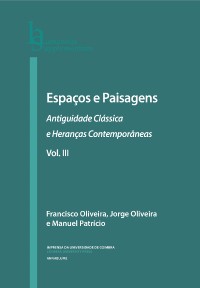Please use this identifier to cite or link to this item:
https://hdl.handle.net/10316.2/31563| DC Field | Value | Language |
|---|---|---|
| dc.contributor.author | Abreu, Susana Matos | |
| dc.date.accessioned | 2014-06-24T10:46:06Z | |
| dc.date.accessioned | 2020-09-21T02:25:56Z | - |
| dc.date.available | 2014-06-24T10:46:06Z | |
| dc.date.available | 2020-09-21T02:25:56Z | - |
| dc.date.issued | 2012 | - |
| dc.identifier.isbn | 978-989-26-0292-9 (PDF) | |
| dc.identifier.uri | https://hdl.handle.net/10316.2/31563 | - |
| dc.description.abstract | André de Resende as a new Alberti?: an ideologist between the Princeps and the Architectus in the requalification of the Roman Vrbs of Évora (Portugal 1531-1537). In 1531-37, when the Portuguese court moved temporary from Lisbon to Évora, this city became a stage of bold urban and architectural renovations. King John III (1521-57) commissioned there a series of improvements to host the court, which reorganized and clarified the Roman urban tissue of the city while restoring some of its ancient monuments. His plan, full of symbolic meaning, used the rhetorical power of the Roman ruins to support the increasing absolutism of his political agenda, accordingly to Alberti’s ideas about the power of the ancient remains as instruments to the ruler. The action of the humanist André the Resende (1500-73) as an expert on antiquities and archaeology is noticeable during this period, as he informs us to have been responsible for the monarch’s decision to restore the supposed Roman aqueduct of Água de Prata. Moreover, one can suspect him to have guided the whole royal urbanistic, and architectural program in someway, as he also tells us that the king commissioned him the translation of the De re aedificatoria by Leon Battista Alberti (1404-72), just after having finished two other books on aqueducts at his request. Our approach goes deeper into this conjecture, analysing a narrative that Resende wrote about the history of the city of Évora, focused on its antiquities – the Historia da Antiguidade da Cidade de Évora (Évora: André de Burgos, 1552). In this text, we can find enough potential inspiration to set the guidelines that transformed the city. The idea gets its strength when noticing some thematic and methodological similarities that exist between the Historia and its literary models found in the writings of Flavio Biondo da Forlì (1392-1463). This author, a humanist and archaeologist, was responsible – together with Alberti and others – for setting up the humanistic program of the instauratio imperii of Rome, and for inciting the subsequent renovatio urbis that took place during the pontificate of Nicholas V (1447-1455). It is possible to find striking parallels, both textual and material, between the royal plan designed for Évora as revealed by Resende’s Historia and the former papal plan intended to restore the ancient grandeur of the Roman vrbs as described by Giannozzo Manetti (1396-1459). They set forth the idea that Resende acted in Évora as a counsellor to King John III, advising him about the redesign of the city’s public space while taking the modern city of Rome as a model. But could this translator of the De re aedificatoria also have acted in Évora as a new Alberti, i. e., as the mediator between the princeps and the architectus, which had been both a counsellor to pope Nicholas V and a mentor to the papal architect Bernardo Rosselino? If so, Resende would probably be following the example of Alberti in Rome during the Quattrocento, as an expert on antiquities and urbanism/architecture, helping to transform the city of Évora into the new capital of the realm. | eng |
| dc.language.iso | por | - |
| dc.publisher | Imprensa da Universidade de Coimbra | por |
| dc.publisher | Associação Portuguesa de Estudos Clássicos | por |
| dc.publisher | Centro de Estudos Clássicos e Humanísticos | por |
| dc.relation.ispartof | http://hdl.handle.net/10316.2/2376 | por |
| dc.rights | open access | - |
| dc.subject | Heritage and politics | eng |
| dc.subject | Heritage and politics | eng |
| dc.subject | Renaissance architect | eng |
| dc.subject | Renaissance urban requalification | eng |
| dc.subject | Memória urbana | por |
| dc.subject | Urbanismo renascentista | por |
| dc.subject | Requalificação urbana e modelos literários | por |
| dc.subject | Vestígios arqueológicos e identidade local | por |
| dc.title | André de Resende, um novo Alberti: um ideólogo entre o Princeps e o Architectus na recuperação da Vrbs romana de Évora (1531-1537) | por |
| dc.type | bookPart | por |
| uc.publication.firstPage | 223 | - |
| uc.publication.lastPage | 229 | - |
| uc.publication.location | Coimbra | por |
| dc.identifier.doi | 10.14195/978-989-8281-69-2_19 | - |
| uc.publication.digCollection | PB | por |
| uc.publication.orderno | 19 | - |
| uc.publication.area | Artes e Humanidades | por |
| uc.publication.bookTitle | Espaços e paisagens: antiguidade clássica e heranças contemporâneas: Vol.3 História, Arqueologia e Arte | - |
| uc.publication.manifest | https://dl.uc.pt/json/iiif/10316.2/31563/227261/manifest?manifest=/json/iiif/10316.2/31563/227261/manifest | - |
| uc.publication.thumbnail | https://dl.uc.pt/retrieve/11421579 | - |
| uc.publication.parentItemId | 52059 | - |
| uc.itemId | 73598 | - |
| item.grantfulltext | open | - |
| item.fulltext | With Fulltext | - |
| Appears in Collections: | Espaços e paisagens: antiguidade clássica e heranças contemporâneas: Vol.3 História, Arqueologia e Arte | |
Files in This Item:
| File | Description | Size | Format | |
|---|---|---|---|---|
| 19-_espa_os_e_paisagens.pdf | 219.17 kB | Adobe PDF |  |
Items in DSpace are protected by copyright, with all rights reserved, unless otherwise indicated.
